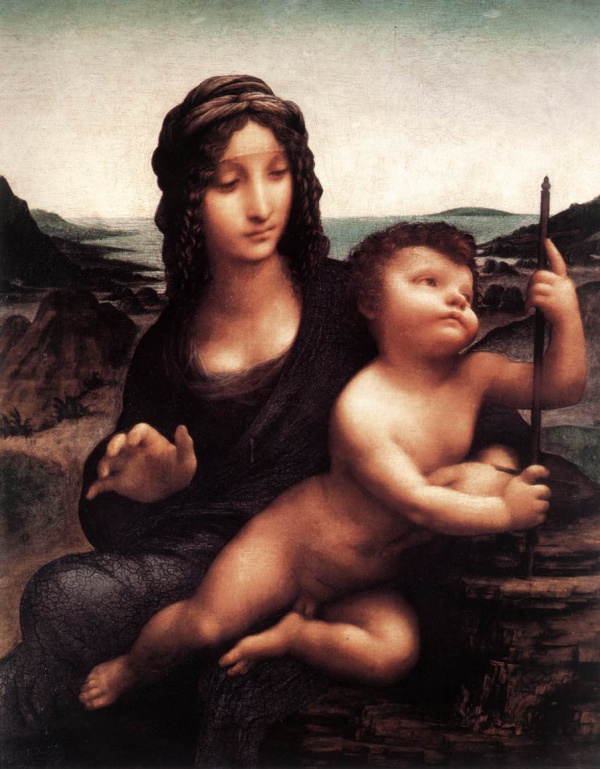Facts About Madonna of the Yarnwinder(The Buccleuch Madonna)
"The Madonna of the Yarnwinder" a captivating subject painted by Leonardo da Vinci, features at least one, and possibly two, versions created beginning in 1499. One of these masterpieces was reportedly commissioned in Florence for Florimond Robertet, a secretary to King Louis XII of France, and might have been delivered to the French court around 1507.
The painting beautifully captures the Virgin Mary with the Christ Child, who is seen playing with a yarnwinder. This simple object symbolizes Mary's domestic life and hints at Christ's future crucifixion. The dynamic and thoughtful composition had a profound impact on later High Renaissance artists such as Raphael and Andrea del Sarto.
The artwork's provenance is pieced together through letters from the early 16th century, which mention Leonardo's tendency to be sidetracked by his mathematical studies and his ongoing work on this painting. Scholars continue to debate whether the painting was indeed delivered to Robertet and who owned it afterward. Two well-known versions, the Buccleuch Madonna and the Lansdowne Madonna, are believed to include Leonardo’s touch. Both show similar experimental changes in their underdrawings, suggesting they evolved concurrently in Leonardo's workshop.
The painting is rich with symbolic elements and features the ambiguous expressions of the figures, all set against expansive landscapes. The Buccleuch Madonna, housed in the Scottish National Gallery, and the Lansdowne Madonna differ mainly in their background scenery. The latter might have been the version that eventually reached Robertet. Over the years, numerous copies and variations of the Madonna of the Yarnwinder have been created by Leonardo’s students and followers, each reflecting different stages of the composition’s evolution.
The painting's influence spread to Spain, where Florentine-trained artists produced their versions. The Buccleuch Madonna was famously stolen in 2003 but was dramatically recovered and returned to the Scottish National Gallery. The Lansdowne Madonna, another significant version, has its own intriguing history of ownership and attribution changes throughout the centuries.
"The Madonna of the Yarnwinder" remains a pivotal work in Leonardo's legacy, showcasing his pioneering approach to composition, rich symbolism, and lasting influence on the art world.

 Ireland
Ireland